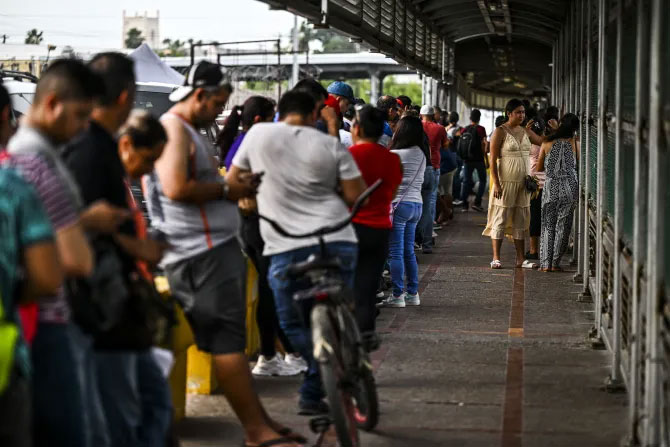A new analysis by the Pew Research Center has found that nearly half of the estimated 280 million people worldwide who live outside their country of birth are Christian, with migrants to the U.S. from Mexico and the Philippines making up a substantial portion.
The August 19 study found that in 2020 — the latest year figures are available — Christians made up an estimated 47 percent of all people living outside their country of birth, while Muslims accounted for 29%, followed by the religiously unaffiliated (13 percent), Hindus (5 percent), Buddhists (4 percent), and Jews (1 percent).
Over the past three decades, the total number of people living as international migrants has increased by 83 percent, outpacing global population growth of 47 percent, Pew noted. Though the number of Christian migrants has similarly increased by 80 percent in the past three decades, the overall religious makeup of migrants worldwide has remained relatively stable since 1990, the study says.
A large percentage of the world’s Christian migrants — 27 percent, or 35.4 million — live in the United States. Germany and Russia follow as the two most common destinations.
Christians make up a larger share of migrants than they do of the world’s population (30 percent), and Mexico is by far the most common origin country for Christian migrants, making up 9 percent of the world’s Christian migrants. According to the study, the United States is their most common destination.
Other common routes for Christian migrants include migrating from Russia to Ukraine and vice versa, from the Philippines to the United States, from Russia to Kazakhstan, and from Poland to Germany, stated a Catholic News Agency report.
Notably, in Spain, the Christian migrant population jumped from fewer than 500,000 to almost 4.2 million over this timespan, up 865 percent, the study says. Most of this growth came from Latin America and the Caribbean, as financial crises in Colombia, Ecuador, and Venezuela triggered recessions and caused millions of people to seek jobs elsewhere. Many Christian migrants from Romania also sought refuge in Spain during this time.
In some countries that had historically lost many of their Christians since 1990 to migration, such as Russia and Mozambique, their numbers have rebounded as greater political stability since 1990 has led to return migration.
Syria is the most common origin country for Muslim migrants, and Muslims often move to places in the Middle East-North Africa region, like Saudi Arabia.
China is the most common origin country for religiously unaffiliated migrants, and the United States is their most common destination.
Hindus are highly underrepresented among migrants, with most originating and remaining in India.
Despite making up a smaller percentage of overall migrants, Jews are by far the likeliest to have migrated. One in 5 Jews reside outside of their country of birth, compared with smaller shares of Christians (6 percent), Muslims (4 percent), Hindus (1 percent), Buddhists (4 percent), and the religiously unaffiliated (2 percent).
The analysis notes that migrants frequently go to countries where their religious identity is already prevalent. Many Muslims have moved to Saudi Arabia, while Jews have gravitated toward Israel. Christians and religiously unaffiliated migrants have the same top three destination countries: the United States, Germany, and Russia.













